Are any of you denizens of the internet residents of Florida? Has anyone visited Florida or, if you’re a wanderer of the blogosphere from somewhere other than the U.S., have you even heard of Florida or have any idea of what it’s like? To many, Florida is a sun-drenched version of the American dream, where summer is perpetual, the beach a block away and fresh orange juice as close as the tree in your back yard. The Florida lifestyle, in fact, can be so pleasant that it’s easy to forget, or overlook, the complexities of America’s third most populous state (that’s right! Only California and Texas have more people and New York — New York! — has less. In American presidential politics, this makes Florida one big electoral prize).
Florida is literally the land of tomorrow and of yesterday; a place where you can watch a rocket launch at Cape Canaveral one day and on the next visit St. Augustine, the oldest city in the United States (founded by the Spanish in 1565, long before those English pilgrims showed up at Plymouth Rock). Florida is a land of paradox and contradictions, with disparate elements often existing in close juxtaposition to each other: a manicured golf course lies next to a mangrove swamp; Disney Land and tourist theme parks co-exist with Miami’s International Art Fair (the place to go for serious collectors of contemporary art); an alligator suns itself on a suburban driveway; egrets and herons fish alongside their human counterparts. Florida wraps this package of self-contradictions in endless miles of beautiful beaches. With the Atlantic Ocean on one side and the Gulf of Mexico on the other, Florida has more seacoast than any other continental state; its gorgeous white sand beaches and tropical waters have tempted generations of American college students south for spring break (note to anyone planning a mid-March Florida trip: take care in booking your hotel, unless you think setting off fire alarms at 3 am is the height of humor. Mr. Janakay does not and was very grumpy indeed after one of his spring Florida jaunts).
Because Florida has so many pleasurable ways to pass the time (not least, dear reader, it offers numerous opportunities to lounge on one’s porch or patio with something white and chilly in hand), it’s very, very easy to overlook its fantastic natural attractions. If you’ve wandered by my blog before, you know that I adore swamps, marshes, wildlife reserves, boardwalks, and parks; I’m basically a huge fan of any place where humanity has left even a sliver of room for non-human creatures. (Nature along the Delaware Coast; Nature on the Move). Although so many of Florida’s natural wonders have been lost to commercial development and population growth, there’s room for hope because so much still remains. Of these surviving remnants of “natural” Florida my very favorite is Corkscrew Swamp, a 13,000 acre sanctuary (about 5300 hectares) located in the western Everglades and operated by the National Audubon Society.
You may find Corkscrew and its wonders about thirty miles inland and slightly north of Naples; find Naples in the map’s lower green quadrant, put your finger on the “a” and go up a bit and you’ll have a rough idea of Corkscrew’s location.
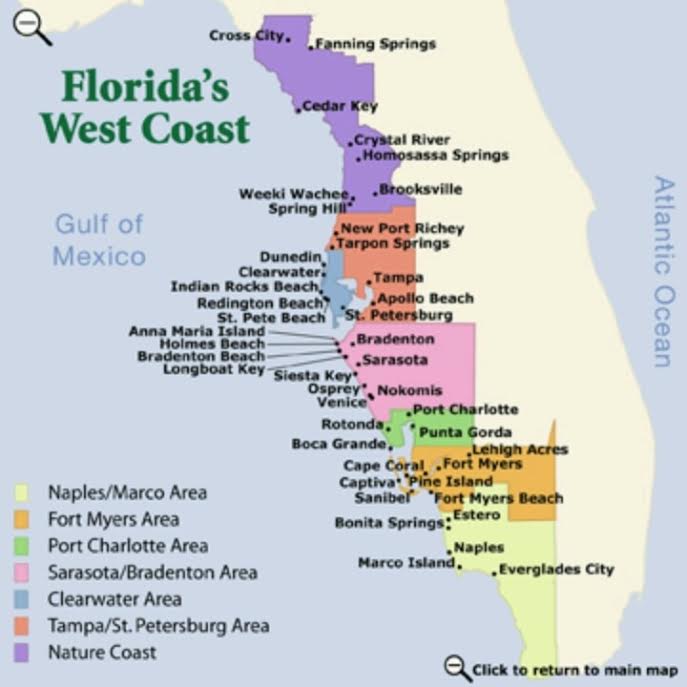
Condominiums and beach playgrounds dominate much of the coast in this area; logging and agriculture have taken their toll. Despite visiting this part of Florida many times, I still find it hard to believe that this:

is only about 30 miles (approximately 48 kilometers) from this:

Visiting Corkscrew and viewing its wonders is easy. The sanctuary is open every day of the year; admission fees are minimal (fourteen American dollars; admission good for two consecutive days if you save your receipt) and the two miles of boardwalk provide easy access to Corkscrew’s different habitats (if you’re not up for two miles, there’s a shorter loop you can do). Because Florida is hot, and birds and wildlife can be scarce when people are present, I always try to arrive as early in the morning as possible (the boardwalk opens at 7 am).



One wonderful thing about wetlands are the sounds, which are frequently as interesting and unusual as the sights. Even though its sound recording isn’t great, this short video of Corkscrew’s prairie does give some idea of the cacophony of frogs, none of which were visible (the snuffling sound is the frogs; there’s also a bird in the background):

Once in the deep swamp I had one of those wonderful, unpredictable experiences that sometimes occur — a wildlife sighting! This was my first view of a group of Corkscrew’s river otters:
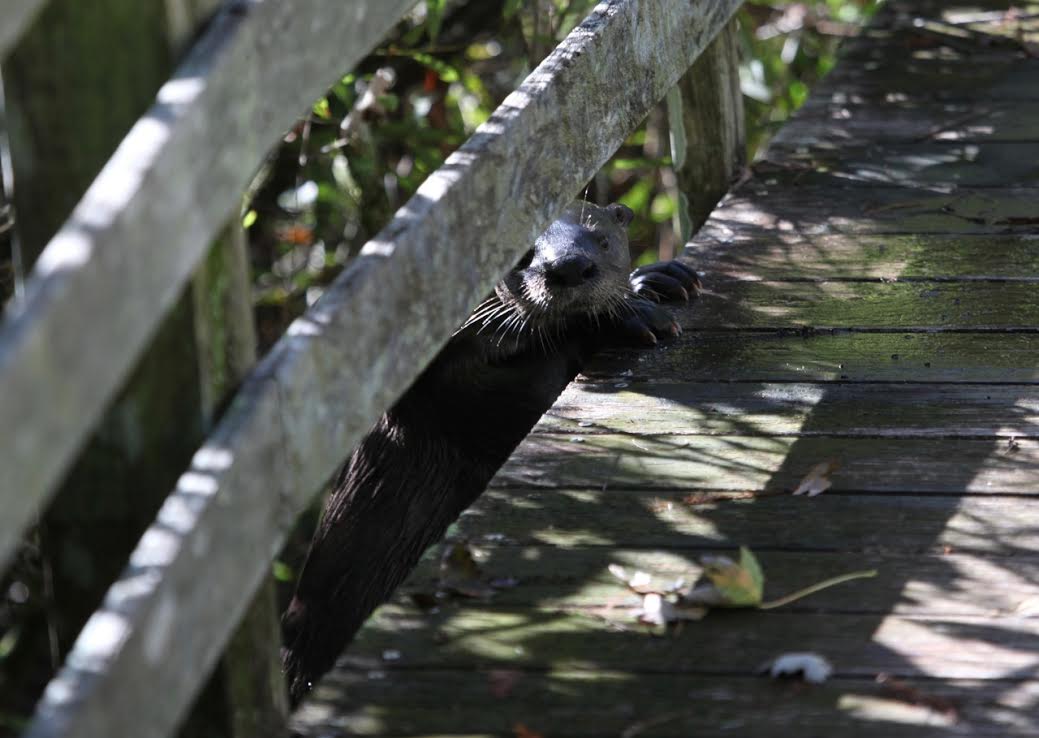


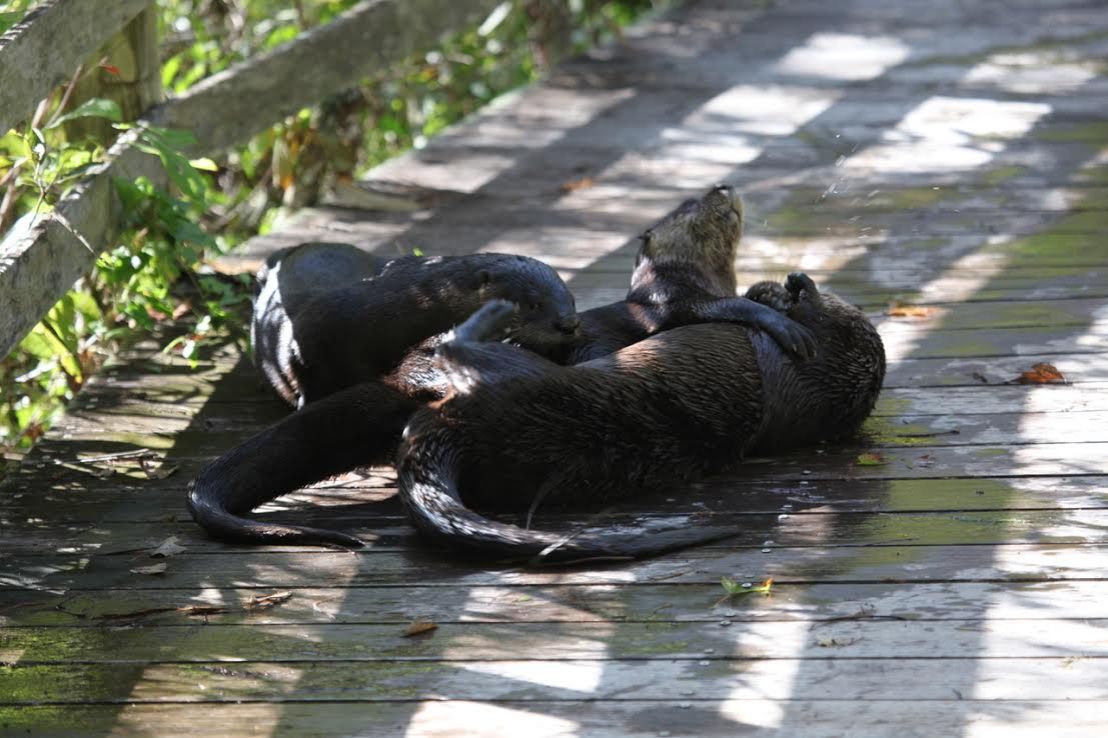


This is a brief video of the otters’ appearance. Because it was made towards the end of the wrestling match, several of the troupe had already moved along the boardwalk. You can hear some swamp sounds and (alas) the click of someone else’s very high tech camera:
Although the otters were hard (well, impossible) to top, Corkscrew has more wonders:

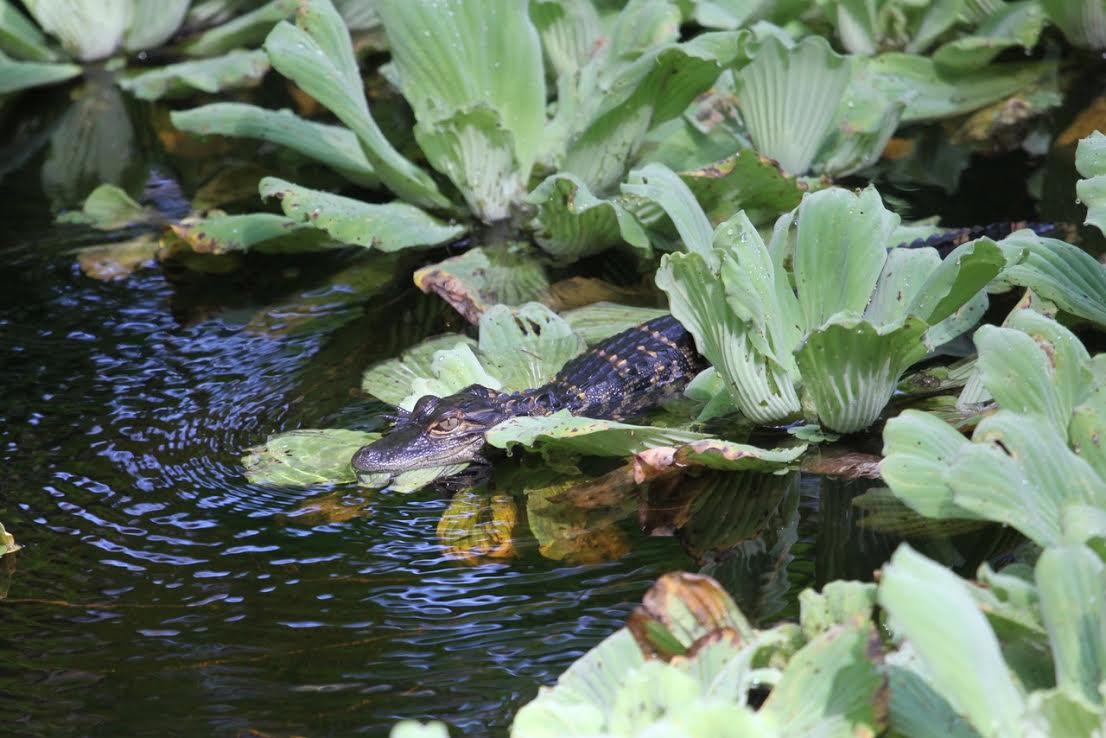






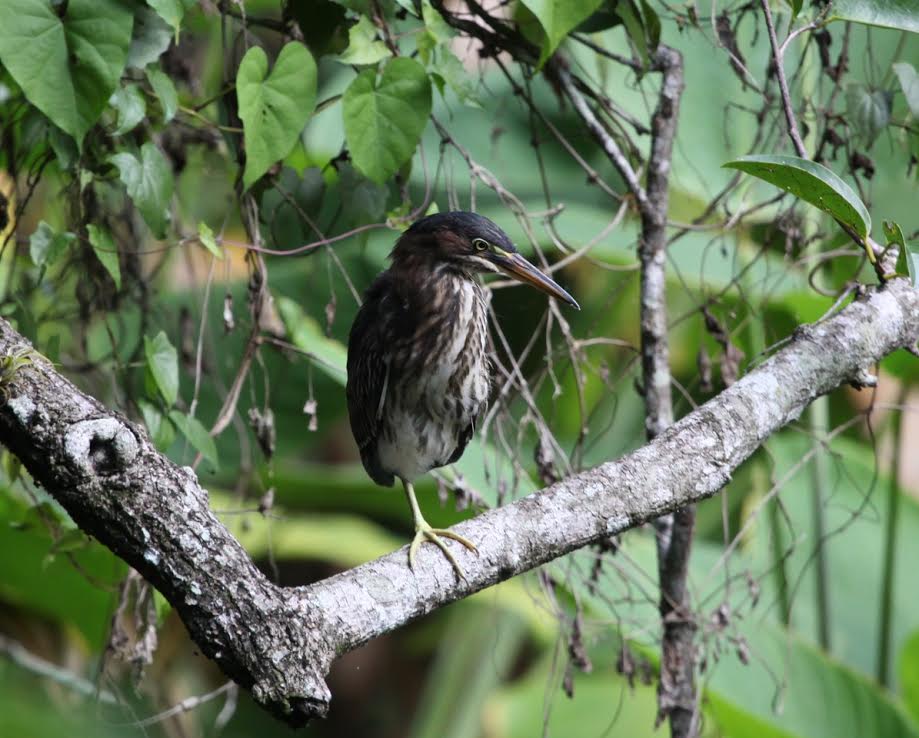



You may have noticed, dear reader, that I have a tendency to preach, which I do attempt (not always very successfully) to keep under control. Chalk it up to all that earnest, didactic Victorian literature I sometimes read (BTW I’m currently engrossed in Middlemarch, George Eliot’s wonderful doorstopper of a novel!). So — skip this paragraph if you like, you’ve received your warning — but it’s impossible for me when discussing Corkscrew not to stress how incredibly difficult it’s been (and continues to be, actually) to preserve its wonders. Have you ever heard of plume hunters or noticed the feathers in all those gorgeous women’s hats, so fashionable in the early part of the 20th century? Well, those feathers had to come from somewhere and the rookeries of south Florida were easy pickings. Plume hunters could make a fortune in one successful hunt and their activities almost wiped out Florida’s heron and egret population. The trade was finally outlawed in the 1920s but even then official enforcement was lax. Audubon hired its own wardens to protect Corkscrew’s nesting sites and launched a public relations campaign against wearing the plumes. It was difficult and violent struggle — two of Audubon’s wardens were murdered in the line of duty — but their efforts were successful and the egret/heron population was saved.


Because you’re observing a living biome, every trip to Corkscrew is different. For example, if you’re lucky enough to visit during October to February, you have a very good chance of seeing:

And then, if you’re incredibly lucky (not ordinary luck, but the kind where you’d win the powerball lottery), you might see — a Florida panther!

I can’t resist using this great video, lifted directly from YouTube. There’s a naughty expression at the end, so if you’re sensitive to such things you may want to turn off the sound. I’ve left it in, as it so exactly expresses how I would have felt!
Audubon calls Florida panthers an “umbrella species,” i.e., if they survive, so do lots of other things that use the same habitat. Once they were found over the entire southeastern U.S.; now there are about 100–150 left in a few spots in southern Florida. Cause for despair or reason to hope? Because the numbers have grown since 1995, when the population was down to only 20-30, you decide.
Awww. You’ve done it again! It’s always such a blast, a treat, a fabulous experience to read any and all you write. I’m becoming very fond of your art and specially nature posts. Let me tell you, please, PREACH, TEACH, do whatever you are doing, because you do it so well. In the absence of any vacation on my side, I got to visit Corkscrew with you.
I adored the portrait of Florida you gave us. As a half Spaniard half Texan, I recognized those contrasts you mentioned. (I believe we have them in Houston to a degree). My oldest daughter’s best friend is from Miami. They have been in Houston for 4 years. Her father is American/Cuban, her mom American/Honduran, but both were raised since birth, and little respectively in Miami. They came from there because their neighborhood was a particularly battered down area, looking for a better place.
My husband and I have been in Houston for 22+ years, and we’re seeing a change. As our area has become more urban, city like, we have news such as a woman shot while driving with her husband in the passenger seat. They say it’s possibly road rage. We’re having lots of shootings and violence we never saw before.
We have a prairie area too nearby, and even before going towards Louisiana, we have our marsh areas and a park with alligators. The frogs video sounded familiar. At Bastrop TX, where I’ve been to a retreat in the past, in the night, by the lake, we were serenaded to a species native to that area, -forgot the name-.
The otter video is a hoot! When I used to run behind the neighbor by a ditch with my neighbor, we saw otters, herons, turtles, rabbits. But never so many or so playful.
And the panther video… what a sight, I’m with you, I’d felt like that for sure!
Now I know what an Anhinga is. I loved all the birds you’ve featured here, and I’m glad you had a great time seeing all those animals and plants at a fascinating state I wish I visit one day.
LikeLike
Silvia: as always, you’re so kind about my posts you give me much encouragement! I’m glad you liked Corkscrew and hope you get to experience it directly one day (make sure you go early, before it’s too hot! But living in Houston, you know all about heat, I’m sure).
I’m so envious, BTW, about your nature experiences around Houston. Texas is a wonderful locale for wildlife and bird viewing, probably better even than Florida. I used to visit the Rio Grande Valley for bird watching; also up around Corpus Christi (think I saw the endangered Whooping Cranes close to there). Houston and further north also has great things; I just haven’t gotten there very much, especially in recent years.
I know what you mean about changes over time in a neighborhood. Since the places I enjoy the most tend to be “wild” to some extent, change usually means development; more people and less nature. Because I live in such an urban area, and in an urban neighborhood (well, suburban really) I cherish my trees and birds all the more! Luckily crime hasn’t moved in yet, although there’s always violence around a city.
I loved the panther video and am glad you did as well. Of all nature’s apex predators, the big cats are the most gorgeous. As I said in my post, I’d give a very great deal to actually see one . . . . maybe I’ll get lucky one day!
The otters were quite a treat for me, as I wasn’t really aware Corkscrew had them. I couldn’t believe that they’d actually come on the boardwalk and stage a floor show!
Oh, before I forget: I love Anhingas. Some of them (can’t remember whether it’s male or female) are actually a sort of silvery color. Lucky you, to see them on a regular basis (I have to travel).
LikeLike
I do cherish your posts. A highlight of the summer is reading your posts, and getting to know you through them. You are really inspiring me to go back to my bird watching and nature walks.
How much I’d love for you to one day see one of beautiful big cats!
Yes to you and travel. Nature, art… some of the great joys of life.
Thanks for recording your adventures on the blog. It’s truly a pleasure to read them. (I just wonder how is it that you don’t get tons of visitors? Your writing is very lively and it hooks the reader for sure.
LikeLiked by 1 person
I’ve only been to Florida once. This was over 25 years ago and it was only for a few days at a resort hotel in Sarasota in December. So I’ve never seen the beautiful wildlife you shared in your photos. What I remember from that visit is the weather, it was just perfectly warm and mild. And I am from Southern California! Our Decembers are typically cool and rainy.
Thank you for the photos and commentary. I may never get over there again and they were a real treat. And as Sylvia reminds me in her comment above, nature walks can be local!
LikeLiked by 1 person
Ruthiella: Thanks so much for your kind words! December is actually an ideal time to visit Sarasota, much better than July, which is hot, hot, hot (and — in December you could probably see a painted bunting, if you made it further south to Corkscrew!). I love Sarasota, but it IS probably better for finding great restaurants than river otters and such! (was Columbia around when you visited? It has great Cuban food!) The thing that’s struck me over and again, about Florida — despite the natural wonders that are there, so much has been lost (I think that it’s probably easier for Sylvia in Texas to see stuff on a casual basis) I really love Corkscrew and I’m keeping my fingers crossed for its continued success . . . .
LikeLike